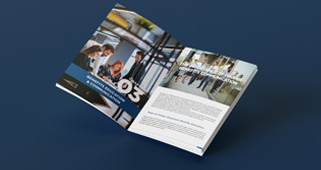Demystifying Level-Funded Health Insurance: A Comprehensive Guide
In the realm of healthcare benefits, employers are constantly seeking innovative solutions that strike a balance between cost-effectiveness and quality coverage. One such solution gaining traction in recent years is level-funded health insurance. While traditional fully-funded and self-funded plans have been the norm for decades, level-funded insurance offers a middle ground that combines the advantages of both. In this comprehensive guide, we’ll delve into what level-funded health insurance is, how it works, its benefits, potential drawbacks, and considerations for employers considering this option.
Understanding Level-Funded Health Insurance
Definition: Level-funded health insurance is a hybrid insurance model that combines elements of traditional fully-funded and self-funded plans. In a level-funded plan, employers pay a fixed monthly premium to an insurance carrier, similar to a fully-funded plan. However, unlike fully-funded plans where premiums are fixed regardless of claims experience, level-funded plans incorporate a self-funding component.
How it Works: A level-funded plan typically consists of two components: a fixed premium and a claims fund. The fixed premium covers administrative expenses, stop-loss insurance (which protects against catastrophic claims), and a predetermined portion of expected claims. The remaining portion of claims is funded through the claims fund, which acts as a reserve account.
Key Features of Level-Funded Plans
- Predictable Costs: With a level-funded plan, employers have greater predictability over their healthcare costs compared to traditional fully-funded plans. The fixed premium provides stability, while the claims fund allows for potential savings if claims experience is favorable.
- Customization: Level-funded plans offer employers flexibility in plan design, allowing them to tailor benefits to meet the specific needs of their workforce. This customization can lead to higher employee satisfaction and engagement.
- Potential Cost Savings: If claims experience is favorable, employers may receive refunds or credits from the claims fund at the end of the plan year, resulting in cost savings compared to fully-funded plans.
- Transparency: Unlike fully-funded plans where premiums are based on community rating or experience rating, level-funded plans provide greater transparency into the underlying costs of healthcare. Employers have visibility into claims data and can better understand how their healthcare dollars are being spent.
Benefits of Level-Funded Health Insurance
- Cost Control: Level-funded plans offer employers greater control over their healthcare costs by providing transparency and potential savings opportunities based on claims experience.
- Flexibility: Employers can customize their benefits package to align with the needs and preferences of their workforce, promoting employee satisfaction and retention.
- Financial Rewards: In favorable claims years, employers may receive refunds or credits from the claims fund, providing a financial incentive for proactive management of employee health and wellness.
- Risk Mitigation: Stop-loss insurance protects employers against catastrophic claims, mitigating the risk associated with self-funding while still allowing for potential cost savings.
Drawbacks and Considerations
- Risk Exposure: While stop-loss insurance provides protection against high claims, employers still bear some level of financial risk, particularly in years of adverse claims experience.
- Administrative Complexity: Managing a level-funded plan requires administrative oversight, including claims tracking, stop-loss insurance management, and compliance with regulatory requirements.
- Cash Flow Considerations: Unlike fully-funded plans with fixed monthly premiums, level-funded plans may require employers to maintain sufficient cash flow to cover fluctuations in claims expenses.
- Suitability: Level-funded plans may not be suitable for all employers, particularly small businesses with limited financial resources or unstable claims experience.
Is Level-Funded Health Insurance Right for Your Business?
Determining whether level-funded health insurance is the right fit for your business requires careful consideration of various factors, including financial stability, claims experience, and risk tolerance. Here are some key questions to guide your decision-making process:
- Financial Stability: Does your organization have the financial resources to cover potential fluctuations in claims expenses?
- Claims Experience: What is your historical claims experience, and how does it compare to industry benchmarks?
- Risk Tolerance: Are you comfortable assuming some level of financial risk in exchange for potential cost savings and flexibility?
- Employee Needs: Do the customization options offered by level-funded plans align with the healthcare needs and preferences of your workforce?
Conclusion
Level-funded health insurance represents a compelling alternative to traditional fully-funded and self-funded plans, offering employers greater cost control, flexibility, and potential cost savings. By understanding the key features, benefits, drawbacks, and considerations associated with level-funded plans, employers can make informed decisions that align with their organizational goals and priorities.
As you explore your options in the realm of health insurance, consider partnering with experts like Benely.com to navigate the complexities of level-funded plans and optimize your benefits strategy. With their expertise and resources, you can leverage the advantages of level-funded health insurance to enhance employee satisfaction, control costs, and drive long-term success for your business.






